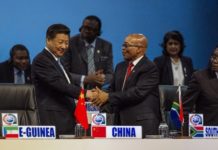Britain’s manufacturers continue to defy official statistics, with the number of companies reporting booming output, orders and exports returning to historic highs in the third quarter, according to the EEF, the sector’s representative body. In what is likely to be welcome news for the government ahead of it unveiling its long-awaited industrial strategy, the buoyancy recorded by manufacturing industry appears to be spread across the country. For the first time in two years, the balance of companies planning to increase investment was positive across all UK regions. The number of groups hiring new employees hit a three-year high, rising for the fourth consecutive quarter, and “confirming that the recovery in manufacturing is firmly on track”, said the EEF. The optimism displayed in the survey of more than 400 industrial companies, carried out by the EEF and BDO, a consultancy, contrasts with data published barely a month ago by the Office for National Statistics, which recorded stagnant manufacturing output for June, and a 0.6 per cent contraction in output during the second quarter compared to the first. However, EEF’s findings are reinforced by a similar survey from the CBI, Britain’s employers’ federation, which also found manufacturers recording robust output and orders in August.
Some of the manufacturing industry’s buoyancy can be explained by the fall in the value of sterling since Britain voted to quit the EU last year. This has helped to fuel a strong jump in exports across the board. Some 33 per cent more companies reported increased sales abroad than recorded stagnant or falling orders overseas for the third quarter. The EEF said this “response balance” for companies’ exports — as with those for groups’ orders and output — was “back at historically high levels and look set to maintain momentum into the final months of the year”. Exports were helped by the surprisingly strong economic rebound in the eurozone. Measures by the European Central Bank to stimulate a recovery with low and even negative interest rates appeared to be paying off, said Lee Hopley, EEF chief economist. “We have had a decade where we have been worried about the weak performance of the eurozone,” she added. “Now we are looking at a cyclical upturn spurred by lots of stimulus . . . and the UK is benefiting.” Despite the widespread recovery, there are clouds on the horizon. British industrial companies are fretting about the prospects for growth in the UK, with uncertainties over Brexit weighing on the sector. Industry confidence dropped for the second consecutive quarter, said the EEF.
The UK’s sluggish economy is expected to impact manufacturers, with the EEF cutting its forecast for the sector’s growth from 1.2 per cent this year to 1 per cent. ““There is little doubt that Brexit is likely to weigh on sentiment,” said Ms Hopley. “As such, it is vital the government sends a signal . . . it is doing everything in its power to get growth of the UK economy back on the agenda. This must include a bold and ambitious cross-government industrial strategy.” The EEF said the discrepancy between private surveys about manufacturing and official statistics might be partly explained by particular weakness in the automobile sector. “After a number of years of healthy expansion, the motor vehicle sector has come off the boil considerably in 2017,” added the EEF.






















